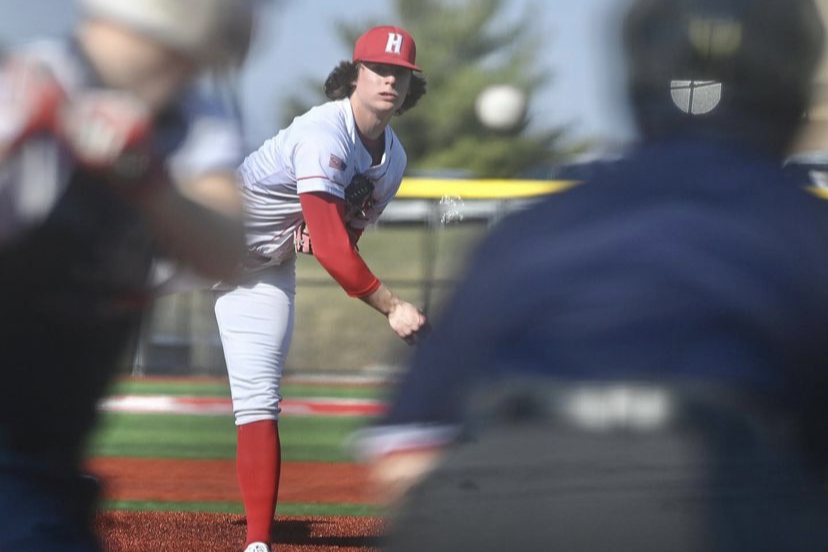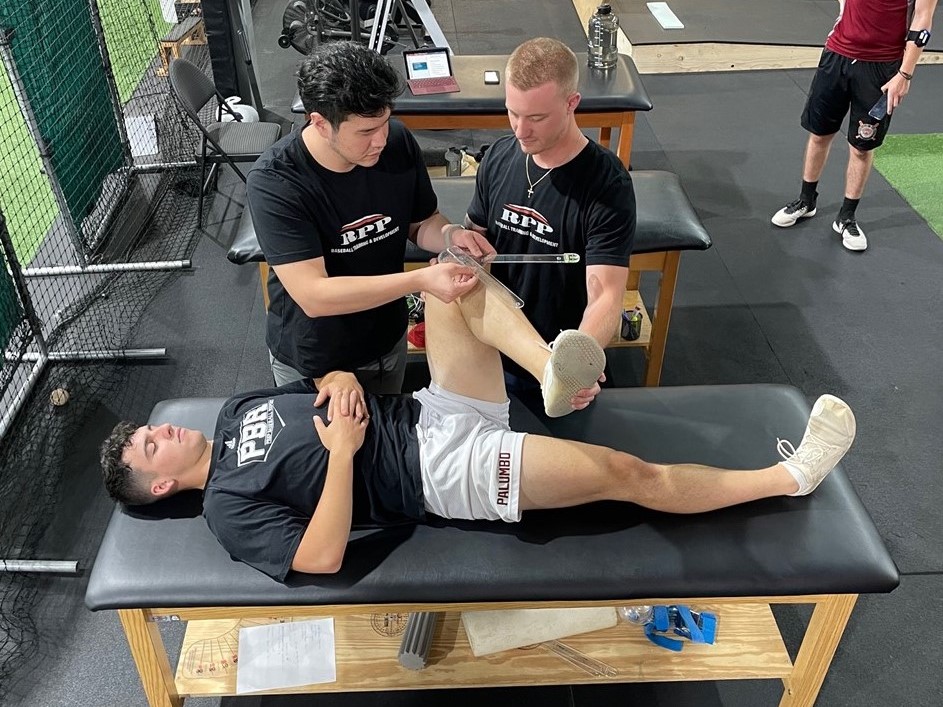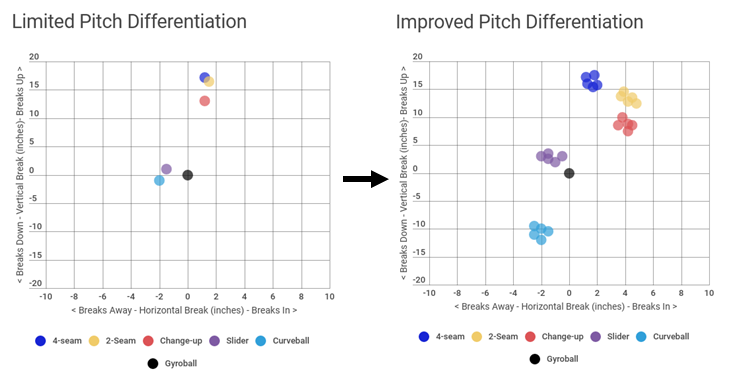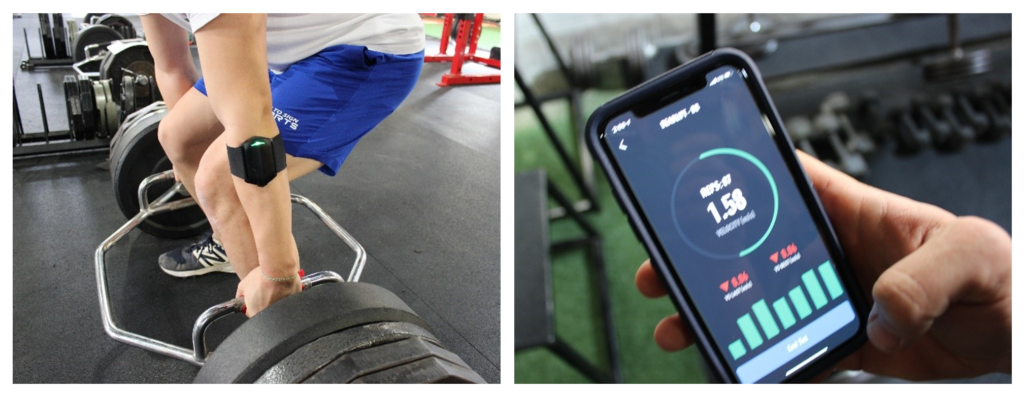
*** Below is a summary of various components of our pitching program. Please note that depending on age and time of year, a specific program may or may not incorporate sections from the list provided below. If you would like further details on a given program, please contact the front desk.
Pitching programs at RPP are year round, with different training options available at different times of the year. Our programming generally follows the seasonality of the sport, including summer, fall, winter and spring. The following is a summary of various components:
Assessments and Evaluations
-
-
- Physical Evals (for ages 16 and older, pre-approved to train independently)
- Movement Screen
- Strength and Power Testing
- Motion Capture Analysis
- Video Analysis
- Pitch Movement Pattern Analysis
- Physical Evals (for ages 16 and older, pre-approved to train independently)
-
Pitching
-
-
- Individualized Pitching Program
- Throwing and Velo Programs
- Workload Management
- Pitch Design
- Recovery
-
Strength Training
-
-
- Mobility Program
- Strength and Power Program
- Velocity-Based Training (VBT)
- Force-Velocity Profiling
-
Movement Screen and Strength Assessment
Most often, pitchers associate their velocity with their mechanics. As our understanding of the human body and technology has improved over the years, it is now more apparent than ever that your velocity ceiling, is limited by your overall physical ability more than anything else. This basically means… “how well you move” and “how powerful you are” to a large extent defines your potential as an athlete.
Our movement screen and strength and power testing gives us a complete picture (for ages 16 and older, pre-approved to train independently)
Movement Screen – Pitchers move in all three planes of motion so their program and assessment should reflect the movement patterns. Physical limitations and imbalances, from a strength and mobility standpoint, can have profound effects on a pitcher’s ability to perform at their max potential. In our movement screen, depending on the age of the athlete, we test for a variety of topics, from laxity to various ranges of motion in the upper and lower extremities.

Strength and Power – Testing for strength and power can give us great insight into the type of athletes we are working with and help create a blueprint for their strength training programs. It wasn’t long ago when strength testing was primarily measuring the 1 rep max (RM) of an athlete with a variety of different lifts in the weight room. Today, technology is changing this dramatically. With our older athletes we generally use velocity based training or VBT, a method of evaluating the intensity of a given movement through the monitoring of bar and / or body speeds with a sensor. This helps us measure an athlete’s strength levels with a high degree of accuracy.
Below is a typical summary report from our assessments for our older athletes that train with our monthly programs (click here for additional details, if interested).
By the time, we have completed our assessment, we know exactly what needs to be addressed.

Pitching Mechanics Evaluation
Since no two pitchers are alike, it is our belief that assessing pitching mechanics is part art and part science. We perform this part of the assessment in two ways, good old video analysis and with a multi-camera motion capture system.
Video Analysis – In our opinion, assessing a pitcher’s mechanics should start and end with video. All the data in the world can never replace watching a delivery with your own eyes. You can call us old school if you want, but a pitching delivery is a human endeavor, and in our opinion, video is king.
Being able to visually see a pitcher in “real-time” speaks volumes about the athlete’s strengths, weaknesses, and overall athleticism. There are times when video will trump everything else the data is telling us. Why? Here’s one way to look at this. Pitching is an art, so…
-
-
- If it looks athletic,
- And velo and command are there,
- And there is no pain involved,
- Then LEAVE IT ALONE!
-
Here is a video summarizing how we analyze pitching mechanics:
Motion Capture – Motion capture (“Mocap”) is considered to be the gold standard of measuring athletic movement. It is used across many industries and research organizations. It basically refers to recording human movement digitally and using that information to create an avatar at extremely high levels of accuracy.
During motion capture, movements are recorded synchronously with multiple cameras at the same time and 100s of times per second. This information is then mapped to a 3D model such that the avatar performs the same actions as the athlete in the digital world. The data and information provided by our Qualisys motion capture system can be extremely valuable from several different perspectives.
First, it paints a thorough picture of how different body parts are moving at extremely high speeds. A lot may appear “normal” at idle, but things can begin to break down at higher velocities and there are things the naked eye can’t see.
Second, we get a detailed picture of where in the delivery the athlete may be leaking velocity. While velo is obviously what most everyone is interested in, putting the complete picture together is crucial to make better decisions in the weight room and on the mound or at the plate.
Third, the data allows us to have a much better understanding of the torque and consequent stress placed on the shoulder and elbow during the delivery.
Lastly, mocap provides a full kinematic sequence which graphically lays out how velocity is generated from the ground up, from your pelvis to your torso and then shoulders and finally the hand. Needless to say, all this information is incredibly additive and valuable.
With that said, here is a sample list of what is not visible to the naked eye:
Throwing Programs
Our Throwing Programs are specifically designed for increasing arm speed, endurance, resilience and improving velocity. Depending on the time of the year, the programs can vary, from ramping up to throwing with intensity or blending onto the mound. In addition, they are built in phases from low to medium to high intensity.
Low Intensity (recovery) – Otherwise known as “recovery days”, both low volume and intent are used to promote recovery in between medium and/or high intent days.
Medium Intensity (long toss, out only) – A higher amount of volume (reps) is used in this phase to slowly build the arms ability to accept higher workloads when ramping up and maintain workload during the week in all other phases.
High Intensity (pull-downs) – Used to help transition throwing into game-time intensities (100%) and give realistic feedback (>80% RPE) on pitch design days. Because of the higher intensities, volume is generally scaled back a bit.
Throwing programs are intended for more physically mature and older athletes. They incorporate throwing correctives, long toss and weighted balls, along with pitcher’s specific warm-up and recovery protocols.
Pitch Design
Pitch design is about working with data analytics and high-speed video capture to help pitchers develop their arsenal. Working with a Rapsodo Pitching camera system we can evaluate your ball movement after completing a bullpen session. Below is a list of several topics we evaluate in pitcher’s ball movement patterns:
-
- Spin axis by pitch type
- Spin efficiency %s by pitch type
- Differentiation and relative pitch movement
- Holes in the overall movement pattern
- Consistency of arm slot (release height and side)
The availability of data makes any discussion mute about ball movement, because the numbers tell you exactly what you’re throwing. When it comes to ball movement, eyes do not tell the story. Pitch design is a great way of improving your pitch movement profile or creating new types of pitches to add to your arsenal.

Strength and Conditioning Program
Our world class strength program for pitchers is 100% designed around the pitcher as a rotational athlete and is highly specialized and customized for the sport. It is the cornerstone of our programming and it is designed to go hand-in-hand with our pitch development programs.
The reality is that every pitcher is different in every way and each needs a different approach to developing their strength and power. The use of velocity-based training with our more experienced athletes allows us to better pinpoint the correct load for each athlete based off of day-to-day fatigue. For more on VBT please click here.
Our programming takes pitchers out of their comfort zone and trains them in all three planes of motion. The following provides a brief summary of our weekly training program:
-
- Upper / Lower Body Strength Training
- Tri-planar Core Development
- Velocity-Based Training (when applicable)
- Movement (eccentric, concentric power development)
- Energy System Work (specific to game-time performance and time of year)

Athlete Highlights – Pitchers
Interested in reading about our pitchers and their successes?
You live too far to train with us in-house at RPP? You can now train with us on a REMOTE basis.


